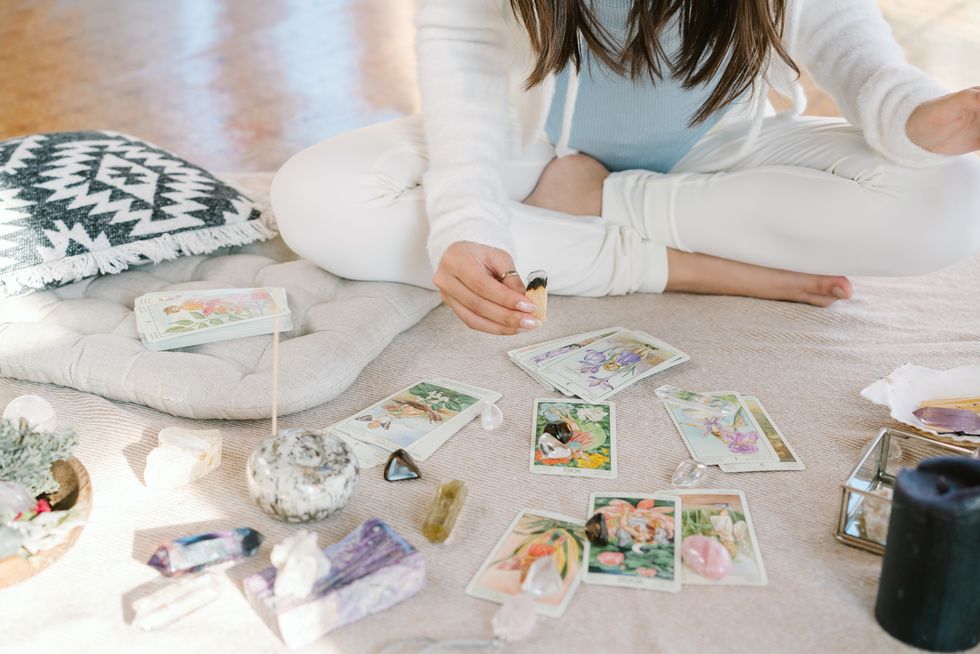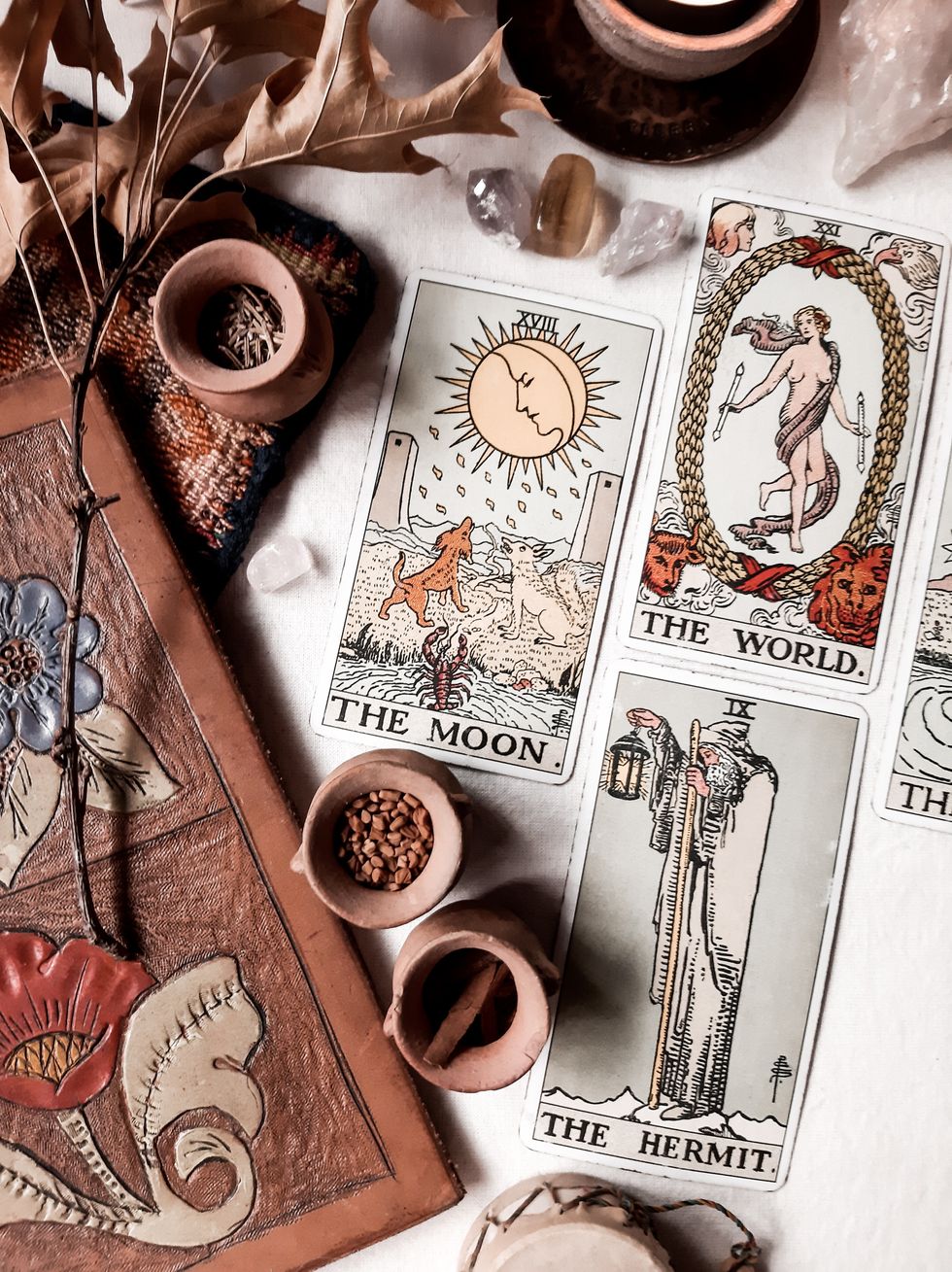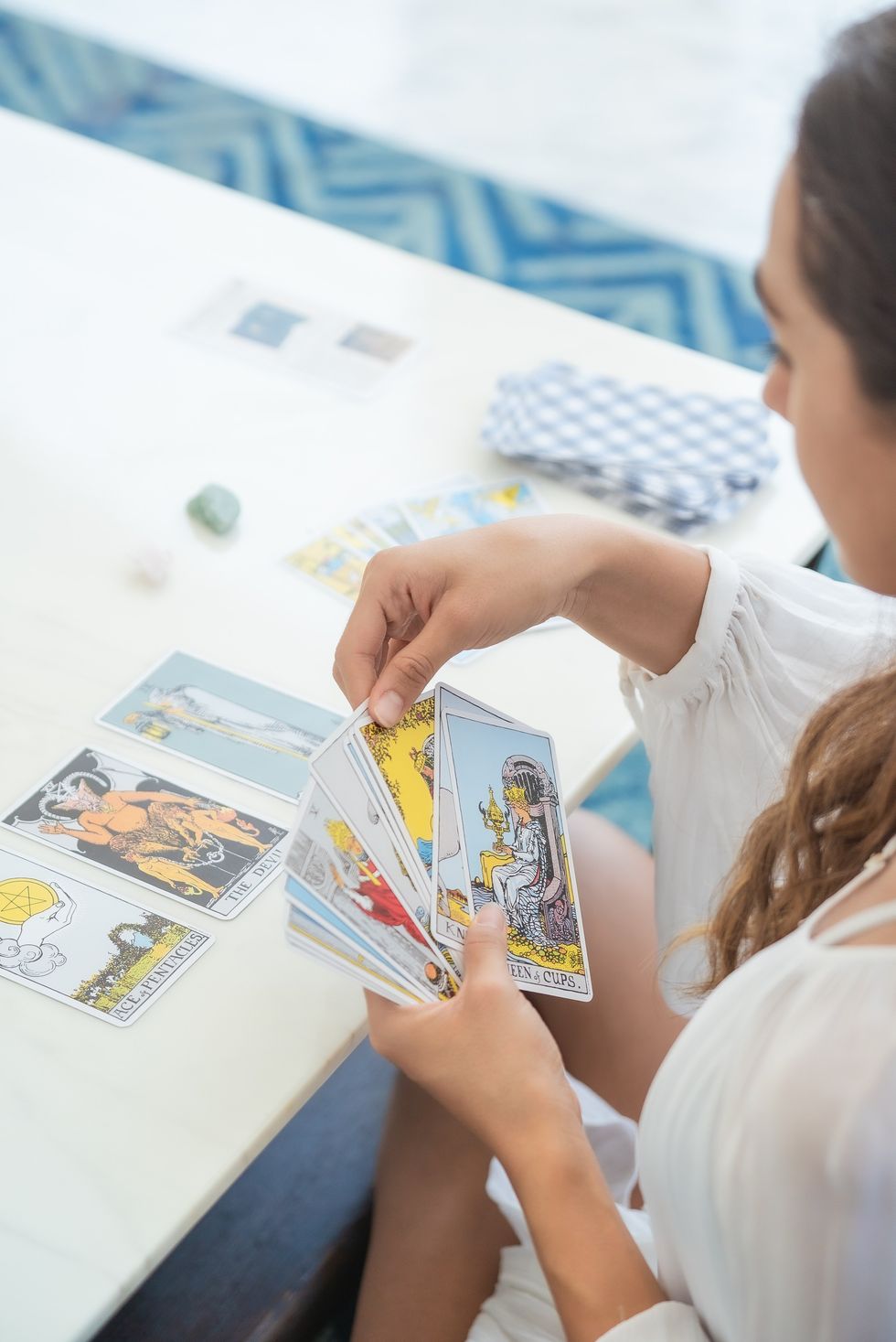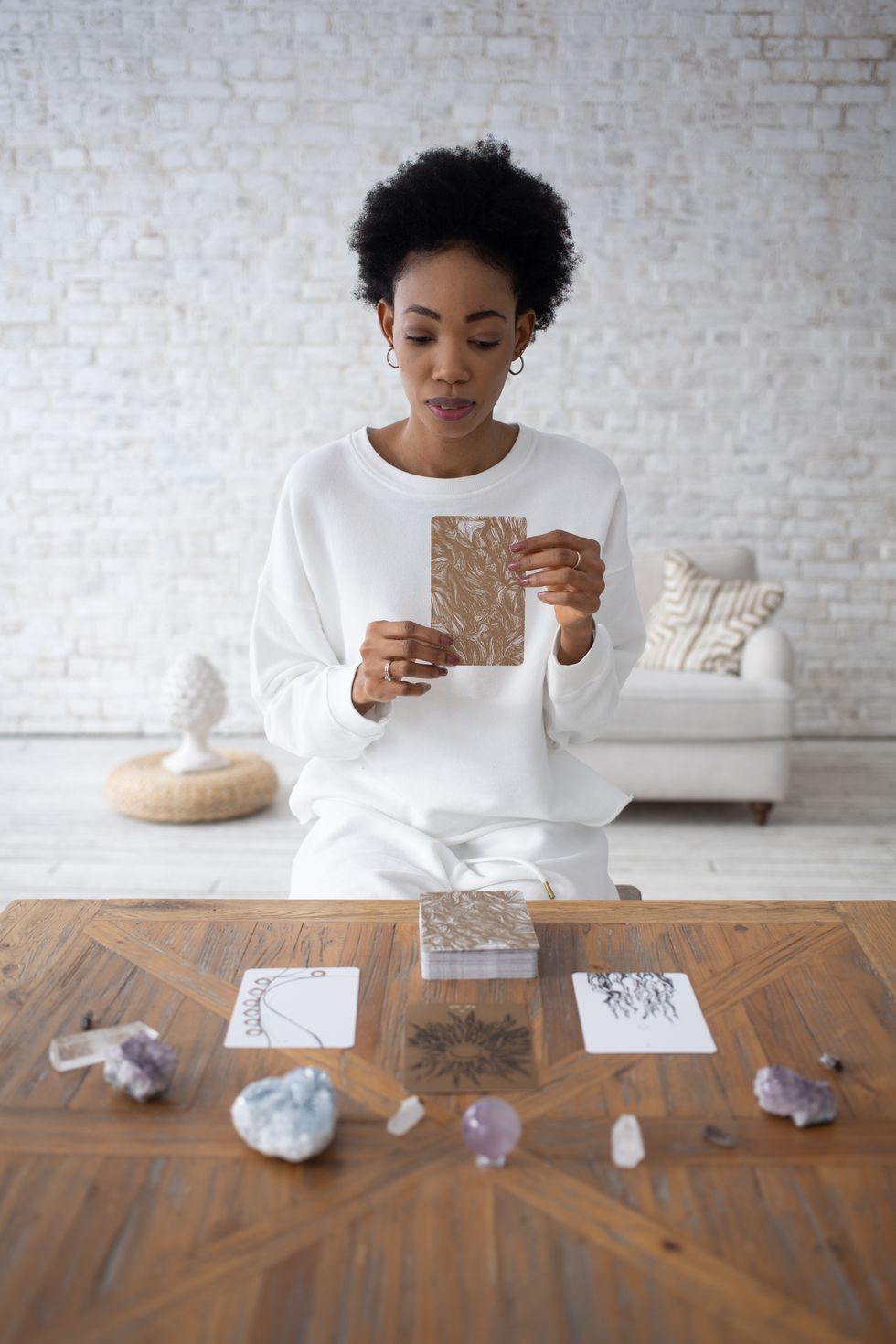
Tarot is so much more than just picking a card and reading what the guidebook that came with your deck says about it. The way you interact with your tarot deck is deeply personal, so you can customize your experience with different rituals, setups, and more. Here’s how to get more out of your brand new tarot deck and jump-start your tarot practice!
Start with a simple tarot deck cleansing ritual.

I like to think of tarot decks as extensions of ourselves. A tarot deck isn’t an external source telling us what to do; it’s a medium through which we guide ourselves to deeper understanding and aligned action.
A great way to start your relationship with your tarot deck is to cleanse it of any lingering and residual energy. Think of this as getting rid of static to get a clearer radio signal.
Here are a few ideas for your deck cleansing ritual:
- Cleanse and super charge your tarot deck with lunar energy by placing it on your windowsill overnight under a full moon.
- Smoke cleanse your tarot deck by lighting your favorite incense – mine is frankincense – and passing your tarot deck through the rising smoke.
- Store your tarot deck with a cleansing crystal. Smoky quartz, for example, is believed to absorb stagnant and negative energies from your deck and leave it ready for use.
However you choose to cleanse your deck, the most important part is the intention behind the ritual. Take whatever fun and magical first step resonates with you. Make it as ceremonial or low key as you want.
Familiarize yourself with your deck and how tarot works.

The basic way tarot reading works is that we come to our cards with a question or problem, and our intuition (or spirit guides, as some prefer to call this inner knowing) will lead us to drawing just the right cards to get us just the right message we need to hear. And guess what — we're all intuitive, which means we can all learn to work with tarot cards.
All tarot decks follow the same structure, and knowing this structure will help you make sense of your readings. A standard tarot deck is divided into 22 Major Arcana cards, which represent the major lessons and themes of life, and 56 Minor Arcana cards, which depict the everyday emotions and experiences we face. The Minor Arcana looks a lot like a standard deck of playing cards. It is divided into four suits, usually called Wands, Cups, Swords, and Pentacles, and each suit includes ten numbered cards followed by four court cards, usually called the Page, Knight, Queen, and King.
Thumb through your tarot deck and read the guidebook, if it came with one, to familiarize yourself with the deck’s imagery, structure, and overall vibe. Also taking some time to understand the general patterns of tarot, like basic numerology and what energy each suit represents, will make tarot reading click into place much faster for you.
Perfect your shuffling and drawing methods.

Okay, so how do you do an actual tarot reading?
Sit down comfortably, take a few deep breaths to center, shuffle your tarot cards while asking a question, and then pick one or more cards to reveal the message.
Shuffle in whatever way you are used to or feels intuitively right for you. If you like a fancy shmancy riffle shuffle, go for it. An overhand shuffle — my personal fave — will also get the job done. Or, just jumble all the cards around on the table with both hands and then put them back together neatly in a stack. There is no correct way to shuffle.
When you’re satisfied that you’ve sufficiently mixed the cards up, just pick one. There’s no right way to do this either. If you want to fan the deck out ceremoniously and wave your hand over the cards until one “feels hot,” go for it. Or, just pick the top card.
Do whatever works. Your intuition will not lead you astray.
Practice reading by pulling a daily tarot card.

The best way to learn to read tarot – without overwhelming yourself with complicated spreads you can’t interpret yet or frustrating yourself with memorizing 78 card meanings – is to draw a single tarot card for yourself each day. I even kept a daily tarot journal to track my progress when I was first learning.
My favorite question to ask for a daily tarot card pull is something constructive and empowering like, “How can I show up as my best self today?” or “What intention can I set for today?” That way, I don’t fall into the passive and potentially anxiety-inducing trap of asking “What’s going to happen to me today?” and trying to predict the future.
A key tip to interpreting your daily tarot card is not to rush to look up the card’s meaning. Give yourself time to study the card and describe what you see. The illustrations of a good tarot deck are designed deliberately with meaningful imagery and symbolism to help you figure out the meaning of the card without having to look it up. After you’ve tried interpreting the card yourself (some cards will be easier than others!), then go ahead and look up its meaning. You will be delightfully surprised at how close you can get just by activating your intuition and what you already know about interpreting artwork and symbolism.
Getting started with tarot doesn’t have to be an intimidating experience. The more you practice with your new deck, the more fun, illuminating, and magical this journey of intuitive self-discovery can be.
Do you have a tarot deck that you love? Let us know in the comments!
Header image by Alena Yanovich / PEXELS
0 Commentaires